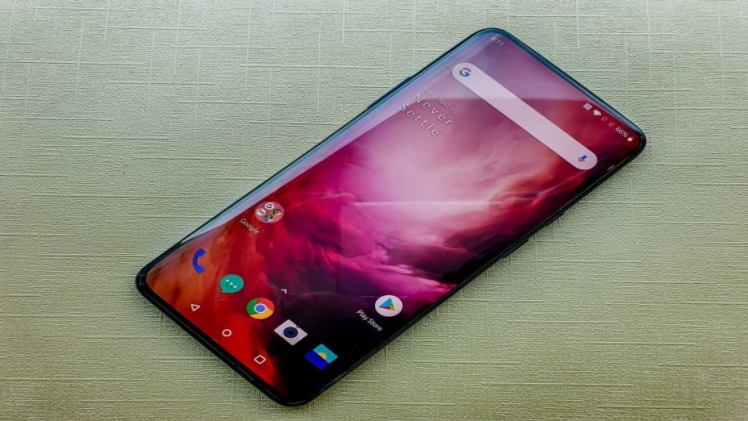What makes a great phone display? Is it the screen material, the screen resolution, the brightness, or the pixel density? If so, then the Sony Xperia 1 II would be the King of the pile thanks to its 1644p 4K panel. However, if it is about having adaptive brightness and superb visibility even under sunlight, then there are plenty of phones now with HDR-capable displays crossing over 1000 nits of brightness with ease. Not to forget the argument between IPS LCD, OLED, and the possibility of mini-led coming soon. We know OLEDs have an infinite contrast ratio, but each screen standard is uniquely appropriate in different scenarios making it hard to pick an absolute winner right away. But that’s what we have to do, round up and compare phone displays from the most recent phones to see which is the winner.
iPhones were traditionally the kings of per unit display calibration. Despite having the most inferior display panels for a while, they were incredibly calibrated to make them feel premium. That said, it’s no longer just about calibration, colour gamut, white balance, display warmth, and an adjustable refresh rate. Rather, the increasing complexity of the display media means that phone displays have to live up to the job at hand. For this reason, among the most recent phones, we have a numerable list, including the Samsung Galaxy S21 Ultra, Sony Xperia 1 II, iPhone 12 Pro Max, Xiaomi Mi 11 Ultra, and Google Pixel 5 battling out for the best display. If you’re looking to buy a phone on a budget with the best display then buying one from this phone store would be your best bet.
Let discuss the phones with the best displays you can buy right now.
Samsung Galaxy S21 Ultra
The Samsung Galaxy S21 Ultra comes with a 6.8-inch 1440 LTPO OLED which also supports 12bit HDR functionality. It has a 120Hz refresh rate capable, but the display refresh rate is adaptive, and so unless it is locked at 120Hz, it will default to 60Hz to save battery. It should be said that it can go as low as 10Hz for static media. The LTPO technology allows it to reach a mind-bending 1500 nits of peak brightness at 15% less battery consumption than the OLED on the S21 and S21+. It has a minimum brightness of 1.5 nits which means the darks will be more profound, and the colour temperature of 6834K makes everything look natural and pleasant for long viewing.
iPhone 12 Pro Max
With a 6.7-inch Super Retina XDR OLED, iPhone 12 Pro Max display is one of the largest in the market. Add in HDR10 and Dolby Vision support to the thin bezels and an all-glass front, and you have one of the best phones for media consumption and productivity. It has an impressive 458ppi pixel density, but despite that, the display refresh rate is set at 60Hz. Apple has optimized the display and iOS to deliver snappy and crispy animations. It also features a wide colour gamut and Apple TrueTone technology which adapts the brightness and colour warmth to the ambient environment. The colour calibration is next level, but you also benefit from having one of the toughest displays on a phone featuring scratch-resistant ceramic glass and resistant oleophobic coating to prevent fingerprints. Cell phone repair services can be very helpful for people who need help with their broken or malfunctioning phones. They offer solutions to problems like water damage, dead batteries, and cracked screens
Sony Xperia 1 II
The Sony Xperia 1 II (“Mark II”) has a 6.5-inch OLED which many pundits have dubbed the sharpest on the market, with excellent colour accuracy, fantastic HDR playback, and precise and steady contrast even in standard mode. Perhaps even more impressive is the level of customization available on this display. The ultra-wide 4K panel has excellent viewing angles, but if the content is not natively 4K, the phone will render it at an impressive 1440P. It is a display for content creators and people who consume a lot of media. This smartphone also benefits from motion blur reduction, a wide colour gamut, tone mapping among other enticing display technologies. This displays the biggest downside is that the max brightness is not at Samsung or iPhone levels, but the difference is negligible when you get used to it.
Xiaomi MI 11 Ultra
With a 6.81-inch AMOLED with HDR10+ and Dolby vision functionality, the Xiaomi Mi 11 Ultra stakes a claim for itself among display kings. That not all. It has a 120Hz refresh rate ability and can reach a peak brightness of 1700nits. The resolution is 551ppi which is also impressive, and you will also like that it is made of tough Corning Gorilla Glass Victus. Because of the hole punch front camera, it has one of the highest aspect ratios at 2.22, which also implies a massive screen-to-body ratio of 91.4%. If your multimedia use is above normal, you will love what you can do with this display.
Google Pixel 5
Google Pixel devices are best known for their camera and software, but the Google Pixel 5 pulled out one of the most remarkable displays in recent phones. It has a well-balanced display with excellent colour accuracy, sufficient brightness, and a modest but sufficient 90Hz refresh rate. For a mid-range affordable phone, these specs tick all the right boxes making the Pixel 5 one of the best values for money phones you can buy at the moment.
Visit This Site: f95zone
While the display is just one part of a phone, it is an important consideration when buying a new phone. It is one of the things that doesn’t change while using a phone, so it’s better to pick the best right from the start. So, which among these phones would you take?
Read More About: tamilmv

